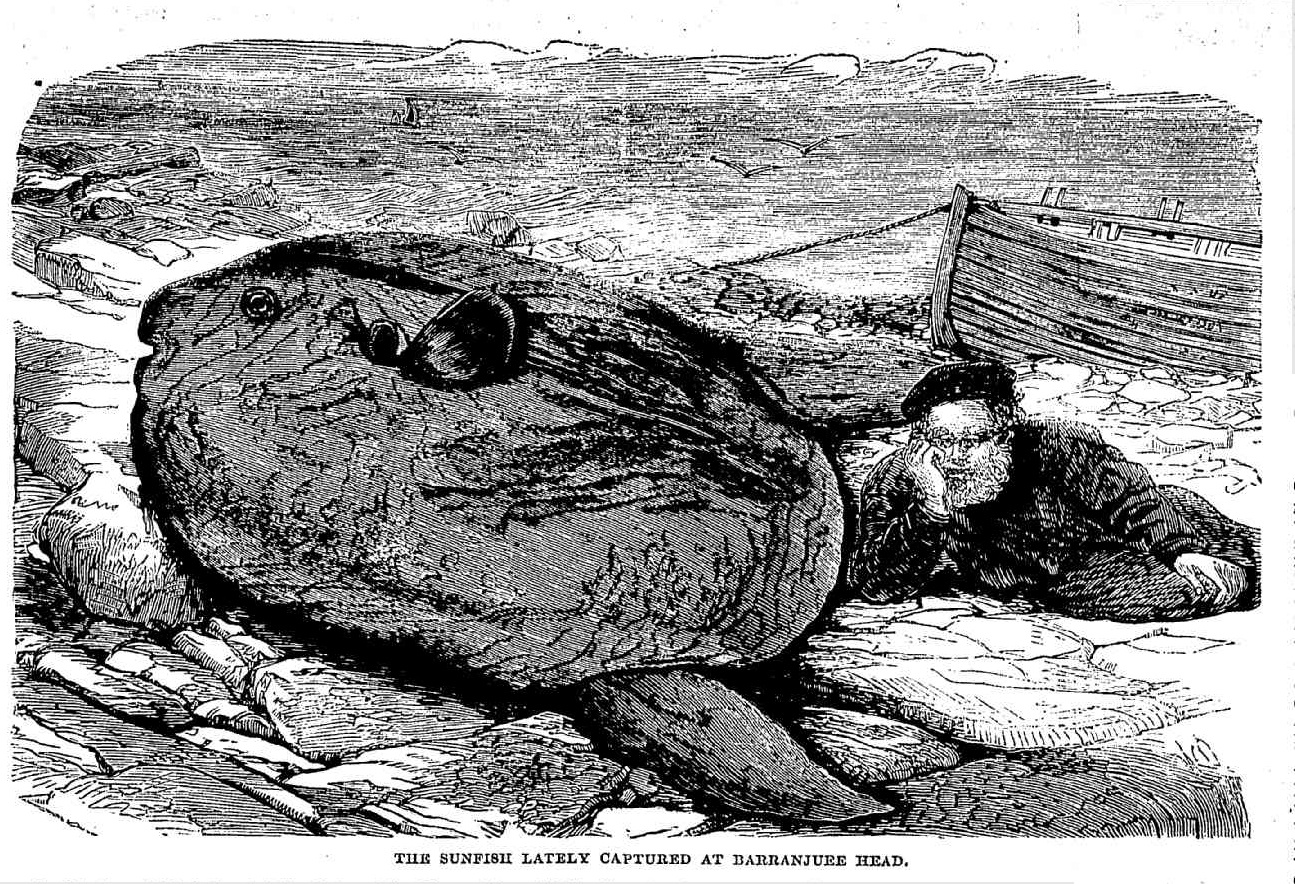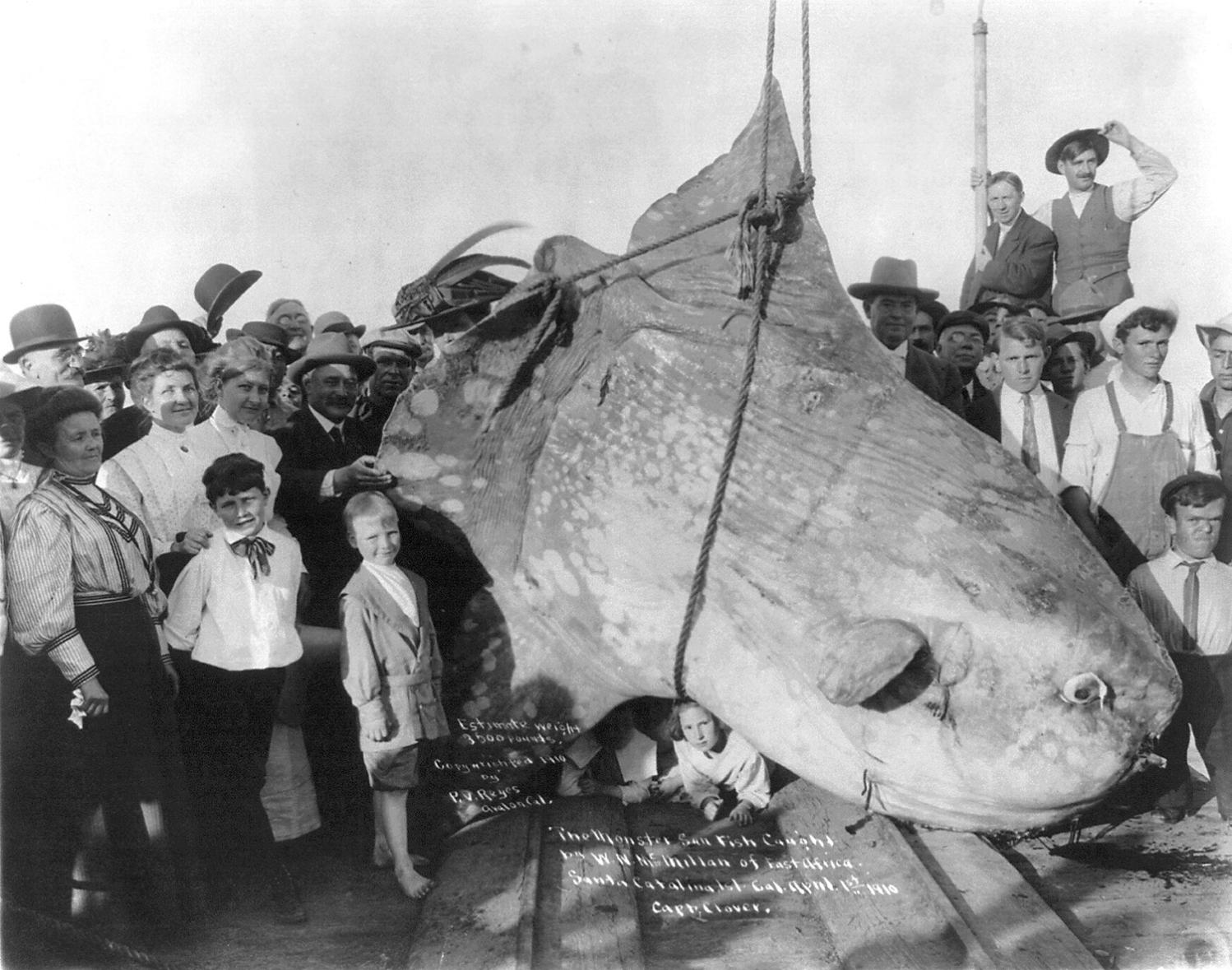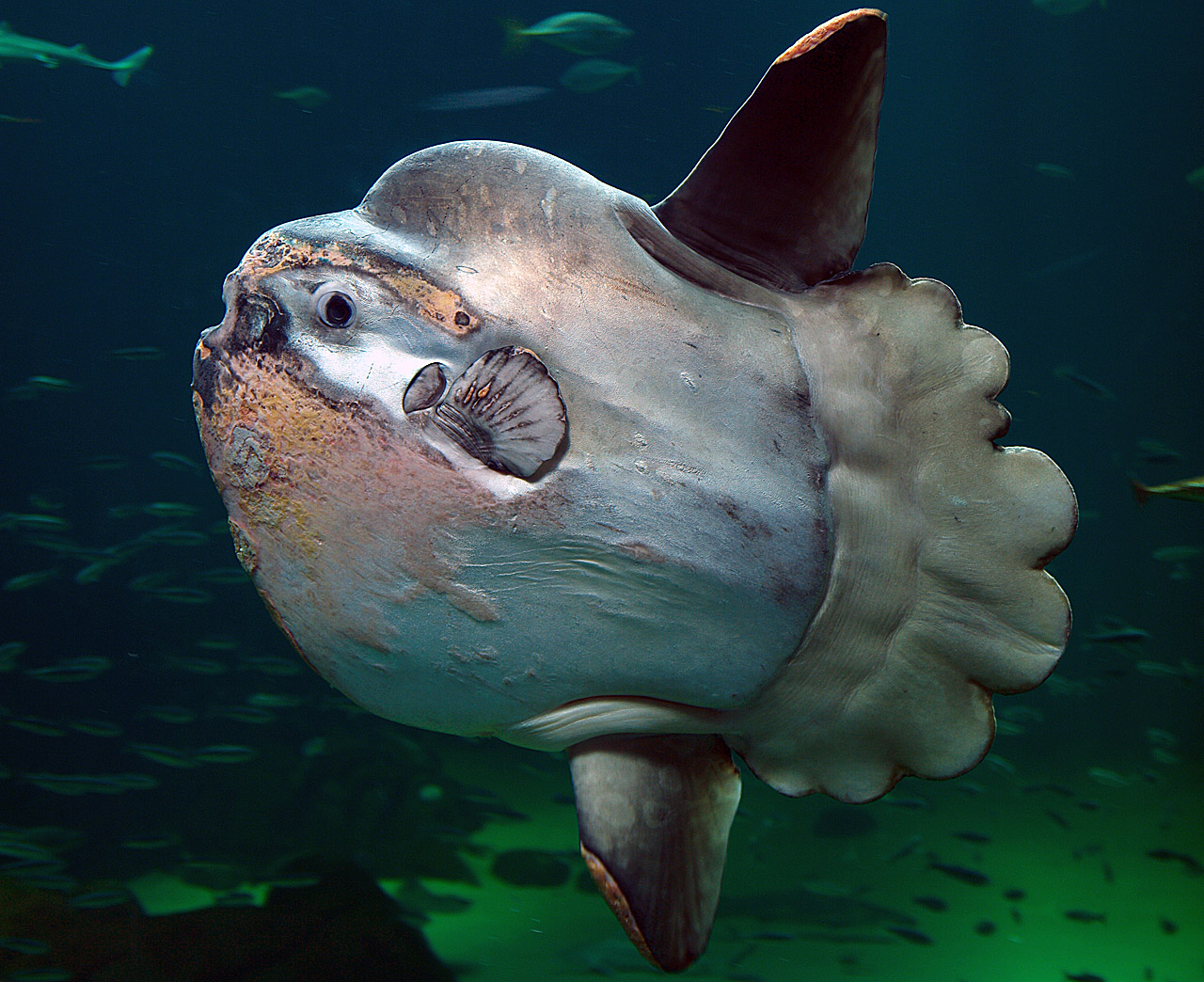May 10 - 16, 2020: Issue 449
Going Fishing This Weekend?
This item, sent in Paul McGrath (who has penned Sunday's History page on Grace Brook of Avalon - a very special mum and Artist) may be of interest - from 1875:
Capture Of A Large Sunfish.
THE Sydney Museum has recently received an interesting addition to its zoological collection in the form of a large sunfish. This fine specimen was harpooned off Barranjuee Head by Mr. Albert Black, who states that on the iron being fastened the fish gave them a fine run, so that the capture was the cause of considerable excitement.
After much difficulty the monster was hauled on board a steamer, and sent to Sydney, when Dr. Cox had it immediately conveyed to the Museum, where the officers of that institution faithfully photographed it, and have succeeded in preparing, preserving, and mounting it most successfully, so that both in measurement and appearance it retains a faithful representation of the living fish.
Only three distinct species of the sunfish are supposed to exist, viz., Orthagoriscus mola, Ortha-goriscus lanceolatus, and Orthagoriscus trun-cate. The present specimen corresponds more nearly with the characters given of O. mola than with any of the others. In O. mola the body is elevated, its depth being always considerably more than one-half the total length. In young examples of this species the vertical diameter exceeds that of the longitudinal, and the skin is rough and minutely granulated. In 0. lanceo latus the body is long with a cordal fin as long as deep, rounded behind, and spotted with grey. In 0. truncatus the skin is smooth and divided into small hexagonal scutella.
The following are the principal measurements of the specimen now in the Museum :-From the edge of the tail to the snout 5 feet 3 inches, from the base of the dorsal fin to the base of the ventral fin 3 feet 4 inches, from the tip of the dorsal fin to the tip of the ventral fin 7 feet 3 inches. The greatest diameter through from shoulder to shoulder, so characteristically marked in this specimen, is 13 inches.
The most remarkable features about this specimen are its short rounded tail, its prominent large fin on the back near the tail, and another fin of a similar character on its under surface ; it possesses also two smaller fins on either side of the flattened body, more forward than the others. These fins are admirably adapted to act as propellers. The mouth, which is very small, has a large tooth both in the upper and lower jaw, well adapted to cutting sea-weed qr breaking up shells, which it was found to feed on. It is covered with a rough skin, much resembling that of some of our sharks, and is provided with an ingenious valve over the exit from the lungs.
We are informed by the curator, Mr. Ramsay, that several additional bones have been found in the dissection of this specimen, which appear to have not been before recorded. This very interesting object is now mounted in a manner creditable to the officers of the institution, and notably to Mr. Thorp, for the rapid and successful way he has preserved it. We are given to understand that another fine sunfish has been preserved by Mr. Macleay, of Elizabeth Bay. It was captured by Mr. John Brazier in the vicinity of Port Stephens. Its measurement is 12ft. from the dorsal fin to the ventral fin, 9ft. from the snout to the tail, and 5ft. across the centre, The fish was full of parasites-the longest worm found in it measuring 5ft, and containing 4000 joints.
Capture of a Large Sunfish. (1875, February 27). Australian Town and Country Journal (Sydney, NSW : 1870 - 1907), p. 21. Retrieved from http://nla.gov.au/nla.news-article70489058

Photo: THE SUNFISH LATELY CAPTURED AT BARRANJUEE HEAD- from the above article

Photo: Albert Black of the Broken Bay Customs Station on Station Beach, Barrenjoey, photo courtesy grandson, John Black, of Pittwater

Photo: An enormous ocean sunfish (Mola mola), caught by W.N. McMillan of E. Africa, at Santa Catalina Isl., Cal. April 1st, 1910. Its weight was estimated at 1600 kg (3,500 pounds).
A sunfish (or mola) is any fish in the Mola genus (family Molidae). The fish develop their truncated, bullet-like shape because the back fin, with which they are born, never grows. Instead, it folds into itself as the creature matures, creating a rounded rudder called a clavus. Mola in Latin means "millstone" and describes the ocean sunfish's somewhat circular shape. They are a silvery colour and have a rough skin texture.
The mola is the heaviest of all the bony fish, with large specimens reaching 14 ft (4.3 m) vertically and 10 ft (3.0 m) horizontally and weighing nearly 5,000 lb (2,300 kg). Sharks and rays can be heavier, but they are cartilaginous fish.
Mola are found in temperate and tropical oceans around the world. They are frequently seen basking in the sun near the surface and are often mistaken for sharks when their huge dorsal fins emerge above the water. This basking near the surface is where they get their name from - they are 'sunning' themselves. Their teeth are fused into a beak-like structure, and they are unable to fully close their relatively small mouths.
Ocean sunfish can become so infested with skin parasites, they will often invite small fish or even birds to feast on them. Sunfish will even breach the surface up to 10 ft (3.0 m) in the air, in an attempt to shake the parasites.
They are clumsy swimmers, waggling their large dorsal and anal fins to move, and steering with their clavus. Their food of choice is jellyfish, though they will eat small fish and huge amounts of zooplankton and algae, as well. They are harmless to people, and are considered docile, but can be very curious and will often approach divers.
Their population is considered stable, though they frequently are snagged in drift gill nets and can suffocate on sea trash, like plastic bags (which resemble jellyfish).

An ocean sunfish in Nordsøen Oceanarium, Hirtshals, Denmark - photo by Per-Ola Norman